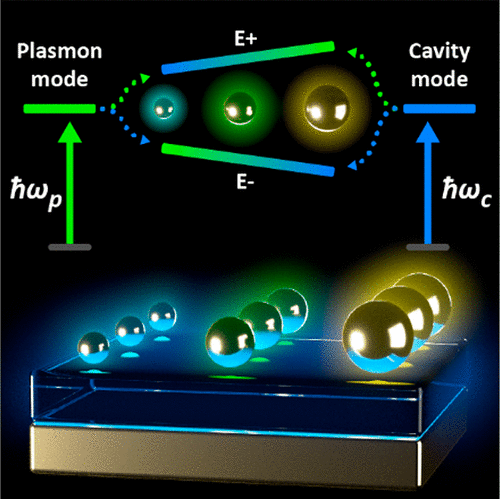当前位置:
X-MOL 学术
›
J. Phys. Chem. Lett.
›
论文详情
Our official English website, www.x-mol.net, welcomes your
feedback! (Note: you will need to create a separate account there.)
Self-Assembly of Plasmonic Near-Perfect Absorbers of Light: The Effect of Particle Size.
The Journal of Physical Chemistry Letters ( IF 4.8 ) Pub Date : 2020-09-16 , DOI: 10.1021/acs.jpclett.0c02461 Gus O Bonin 1 , Steven J Barrow 1 , Timothy U Connell 1 , Ann Roberts 2 , Anthony S R Chesman 3, 4 , Daniel E Gómez 1
The Journal of Physical Chemistry Letters ( IF 4.8 ) Pub Date : 2020-09-16 , DOI: 10.1021/acs.jpclett.0c02461 Gus O Bonin 1 , Steven J Barrow 1 , Timothy U Connell 1 , Ann Roberts 2 , Anthony S R Chesman 3, 4 , Daniel E Gómez 1
Affiliation

|
Structures capable of perfect light absorption promise technological advancements in varied applications, including sensing, optoelectronics, and photocatalysis. While it is possible to realize such structures by placing a monolayer of metal nanostructures above a reflecting surface, there remains limited studies on what effect particle size plays on their capacity to absorb light. Here, we fabricate near-perfect absorbers using colloidal Au nanoparticles, via their electrostatic self-assembly on a TiO2 film supported by a gold mirror. This method enables the control of interparticle spacing, thus minimizing reflection to achieve optimal absorption. Slightly altering the nanoparticle size in these structures reveals significant changes in the spectral separation of hybrid optical modes. We rationalize this observation by interpreting data with a coupled-mode theory that provides a thorough basis for creating functional absorbers using complex colloids and outlines the key considerations for achieving a broadened spectral response.
中文翻译:

等离子体完美近光吸收体的自组装:粒径的影响。
能够完美吸收光的结构有望在包括传感,光电和光催化在内的各种应用中取得技术进步。尽管可以通过在反射表面上方放置金属纳米结构单层来实现这种结构,但关于颗粒尺寸对它们吸收光的能力产生何种影响的研究仍然有限。在这里,我们通过胶体金纳米颗粒通过在TiO 2上的静电自组装来制造近乎完美的吸收体影片由金镜支撑。该方法能够控制粒子间的间距,从而使反射最小化,以实现最佳吸收。稍微改变这些结构中的纳米颗粒大小会发现混合光学模式的光谱分离发生了显着变化。我们通过使用耦合模式理论解释数据来合理化此观察结果,该理论为使用复杂的胶体创建功能性吸收剂提供了透彻的基础,并概述了实现宽光谱响应的关键考虑因素。
更新日期:2020-10-02
中文翻译:

等离子体完美近光吸收体的自组装:粒径的影响。
能够完美吸收光的结构有望在包括传感,光电和光催化在内的各种应用中取得技术进步。尽管可以通过在反射表面上方放置金属纳米结构单层来实现这种结构,但关于颗粒尺寸对它们吸收光的能力产生何种影响的研究仍然有限。在这里,我们通过胶体金纳米颗粒通过在TiO 2上的静电自组装来制造近乎完美的吸收体影片由金镜支撑。该方法能够控制粒子间的间距,从而使反射最小化,以实现最佳吸收。稍微改变这些结构中的纳米颗粒大小会发现混合光学模式的光谱分离发生了显着变化。我们通过使用耦合模式理论解释数据来合理化此观察结果,该理论为使用复杂的胶体创建功能性吸收剂提供了透彻的基础,并概述了实现宽光谱响应的关键考虑因素。









































 京公网安备 11010802027423号
京公网安备 11010802027423号